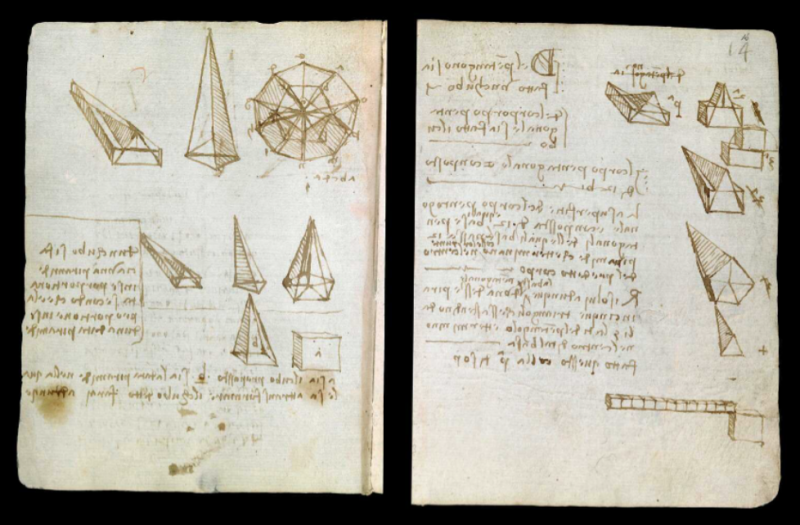Community, Leadership, Experimentation, Diversity, & Education
Pittsburgh Arts, Regional Theatre, New Work, Producing, Copyright, Labor Unions,
New Products, Coping Skills, J-O-Bs...
Theatre industry news, University & School of Drama Announcements, plus occasional course support for
Carnegie Mellon School of Drama Faculty, Staff, Students, and Alumni.
CMU School of Drama
Monday, September 03, 2018
Leonardo da Vinci's Earliest Notebooks Now Digitized and Made Free Online: Explore His Ingenious Drawings, Diagrams, Mirror Writing & More
Open Culture: Do a search on the word “polymath” and you will see an image or reference to Leonardo da Vinci in nearly every result. Many historical figures—not all of them world famous, not all Europeans, men, or from the Italian Renaissance—fit the description. But few such recorded individuals were as feverishly active, restlessly inventive, and astonishingly prolific as Leonardo, who left riddles enough for scholars to solve for many lifetimes.
Subscribe to:
Post Comments (Atom)

4 comments:
Notebooks and diaries provide so much insight as to what is within a person’s mind. For this reason, it is so incredible that we now have free access to the journals of Leonardo Da Vinci. The pages are filled with words and sketches of a variety of subjects and complexities. Da Vinci is the quintessence of the Renaissance because he did not limit himself. He explored the sciences yet was also renowned as a world-class painter. I appreciate the blending of the subjects because it is vital in the theatrical context as well. A magnificent scenic design cannot truly be brought to life without the engineering of the technical director. A costume designer cannot adequately dress a cast without an organized and devoted production crew. The factions of the industry cannot succeed without proper support from each and every division. Da Vinci was able to see the connections in our world, process them, and put his thoughts down on paper. And now we can take a look, and begin to understand the man who knew no boundaries when it comes to knowledge.
I was able to visit a museum in Charlotte North Carolina, where they had several prototypes of what the machines pictured here should look and work like. It is very interesting to see the intrinsical mix of design and science, like they mentioned in the article. The use of paper and journaling was beneficial for him as an artist, and the development of his ideas, but it was also beneficial to the rest of the world. Because of what he left written we can have a better grasp of what he was aiming for. It really makes me think of how the documentation of our work will remain long past our time, and how as artists we should be more conscious of how or work is presented. With all the technological advancements we currently have, we don’t have to worry about documentation, almost every artist has a website and a digital portfolio. But we should we thinking on how will these things will speak for ourselves once after we are gone.
It’s wonderful that these pages are now available on the web. Though for most people they may just be cool to look at, these drawings could allow scholars to understand both da Vinci and the Italian Renaissance better. The fact that there the pages were spread among many different places must made research substantially harder. It's amazing that the International Image Interoperability Framework technology that allows the deep zoom has been developed and used. I wonder if the accessibility of da Vinci’s work changes how he is perceived by public. People could be inspired to design and create both their own ideas and ideas inspired by his work. I hope that people explore these resources but I think that since da Vinci practices mirror writing and it is not in most people's native language the pages may mostly be ignored and not utilized in the best way. However, I have enjoyed just looking at the images.
Leonardo da Vinci has always been an important historical figure. His work in anatomy, arts and other sciences pushed the boundaries and helped us move forward. I went to an exhibit of some of his work and was blown away by the inventions he just thought up in his head. To me, they are a normal part of history, but I was thinking about how we might not have them if he did not think them up. This article was really interesting because they have decided to digitize his notebooks. I think notebooks are a great way to understand someone and their methods. I love looking at artist's sketches because it shows who they are. A final product has them in it, but they've perfected it. A sketch is raw and unfinished. I want to look at the digitized copies for myself because I love that they are making it accessible to the public by making it free.
Post a Comment